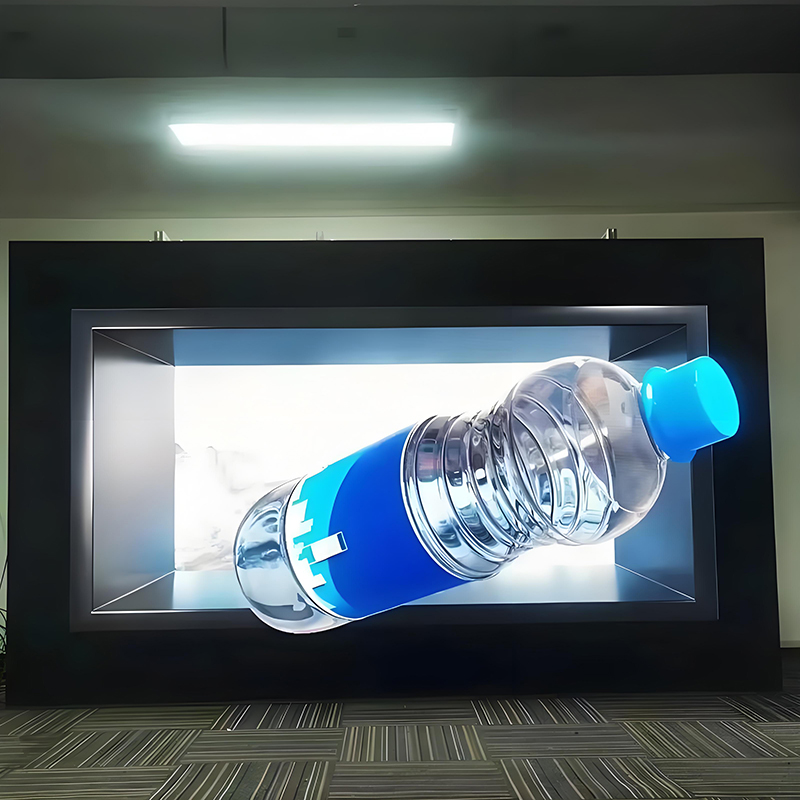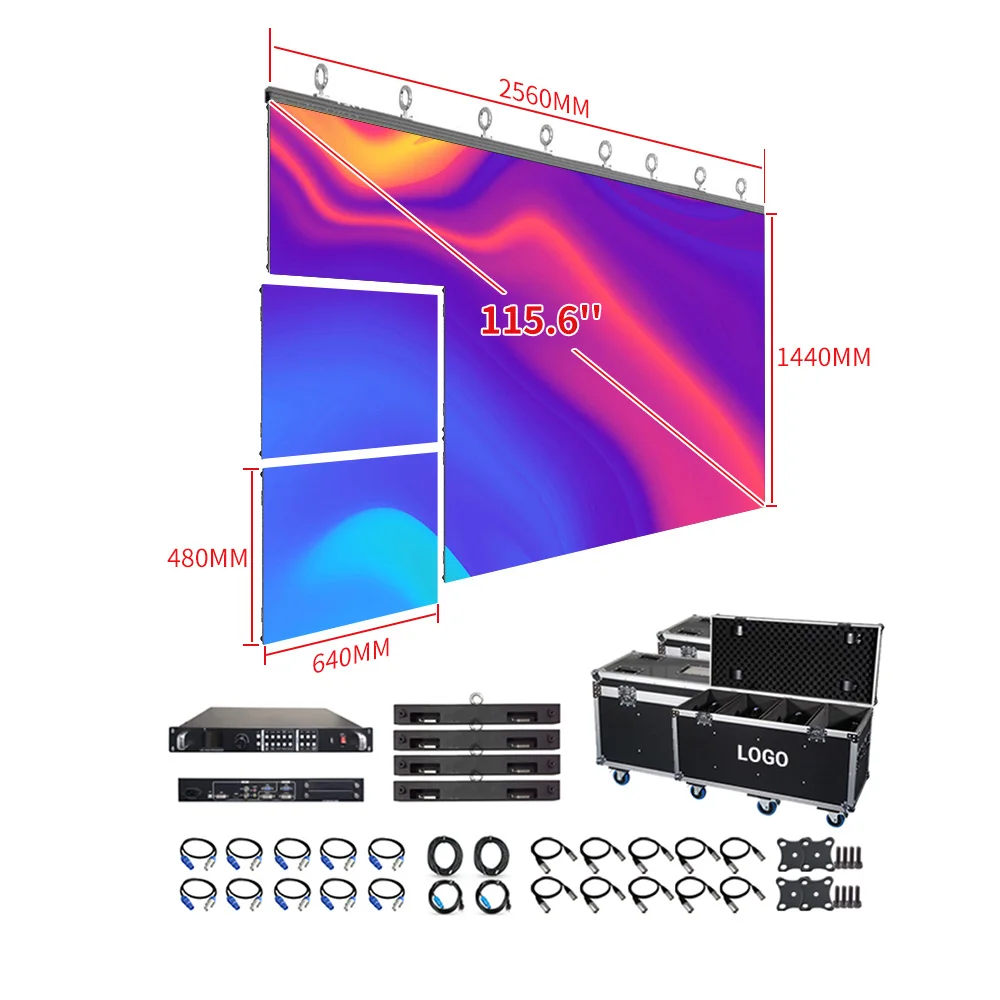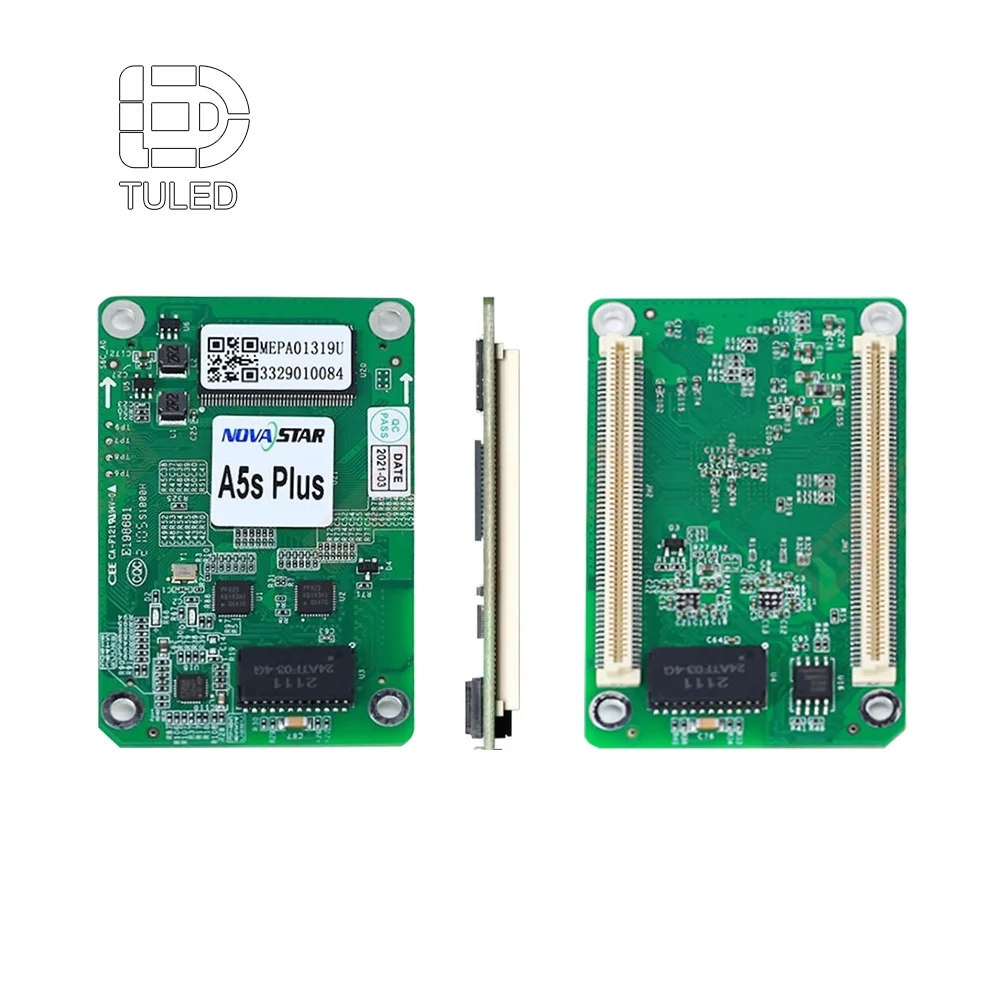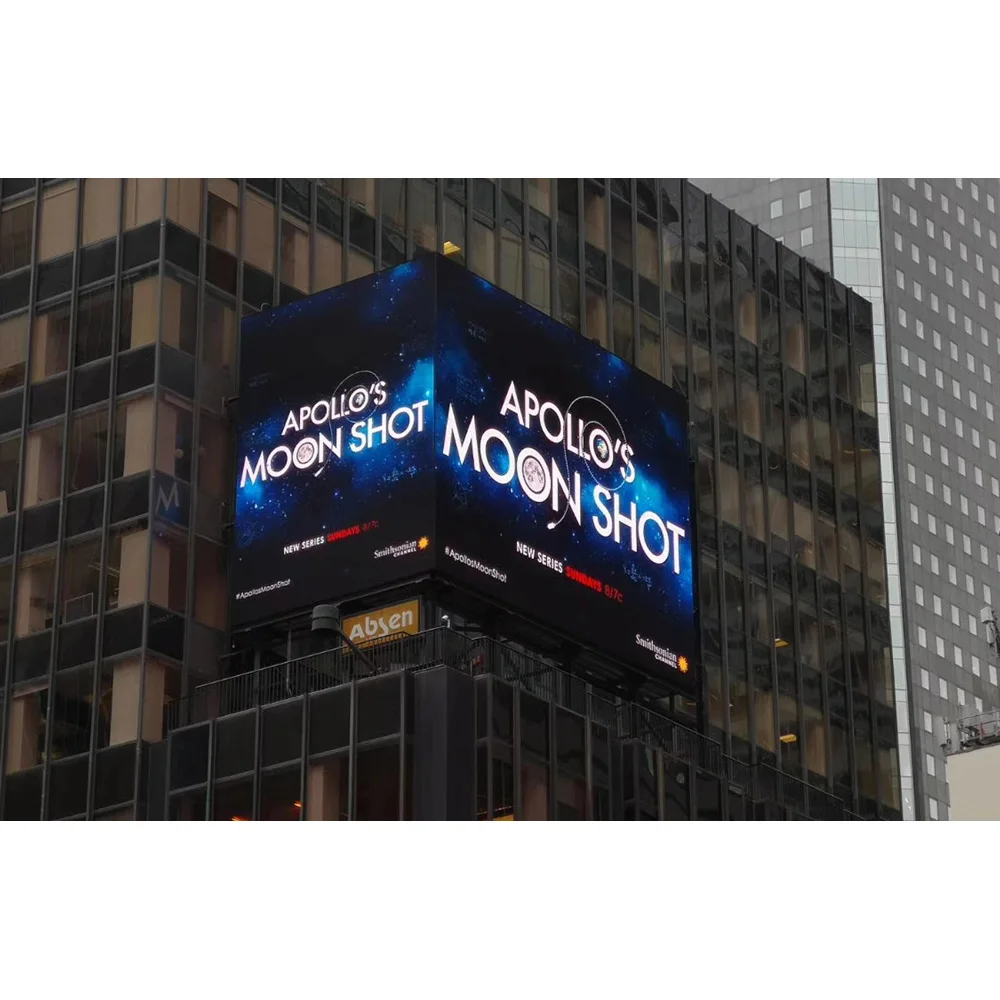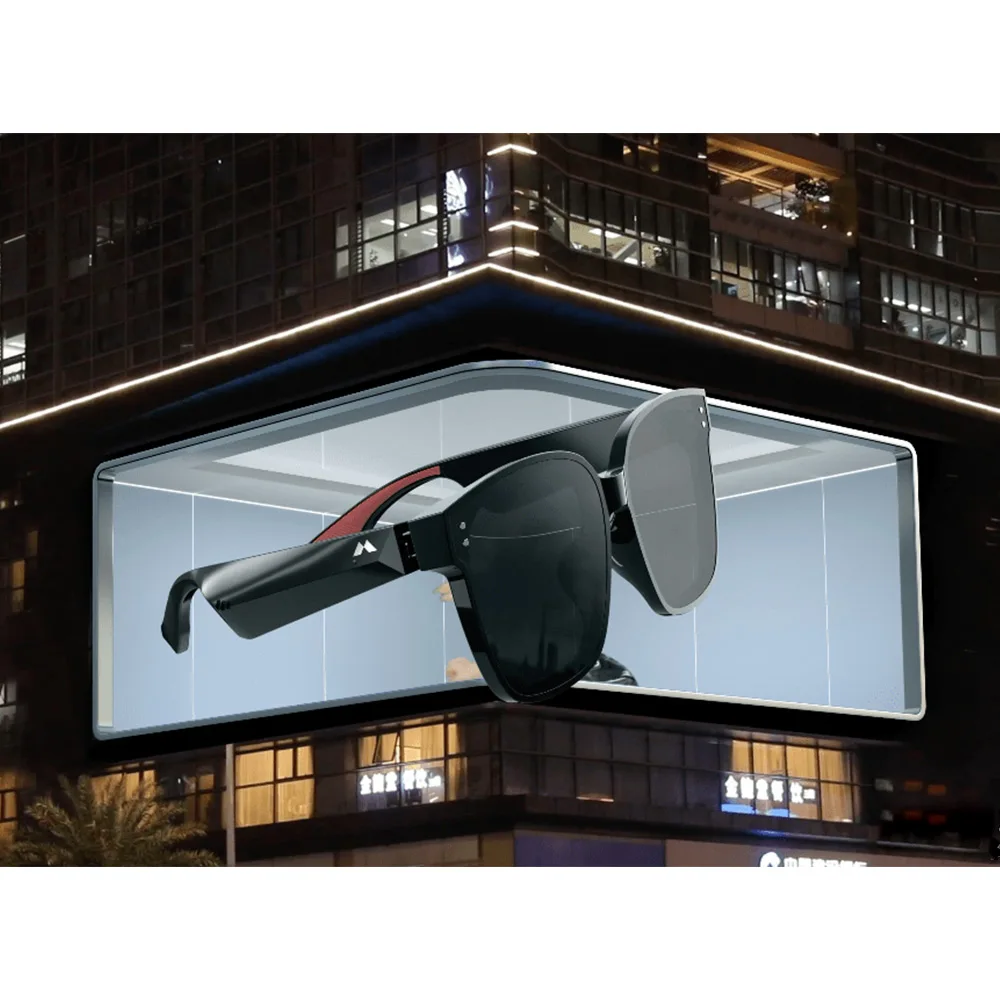מהי תצוגת באדום? הבנת הטכנולוגיה הבסיסית
יסודות טכנולוגיית תצוגת באדום והרכיבים המרכזיים
תצוגת באדום היא מערכת ויזואלית שמבוססת על דיודות פולטות אור המורכבות בלוחות מודולריים. תצוגות אלו יוצרות תמונות דרך אלפי דיודות באדום פרטניות שפועלות כפיקסלים, כאשר כל דיודה פולטת אור אדום, ירוק או כחול. רכיבים מרכזיים כוללים:
- מודולים LED המכילות אשכולות של דיודות
- מערכות שליטה לעיבוד אותות והפצה של תוכן
- ספקי כוח מואמות לייעול צריכת אנרגיה
עיצוב מודולרי זה מאפשר הרחבה ללא גבול, ומאפשר תצוגות שמעוטפות installations בגודל אצטדיון או שלטים קומפקטיים למלאכה שיווקית באותה דיוקות
תצוגת באדום ניגודית מול טכנולוגיות תצוגה אחרות (לiquid Crystal Display, Organic Light-Emitting Diode)
בניגוד למסכי LCD שדורשים תאורה אחורית או לחומרים האורגניים ב-OLED, מסכי LED הישירים מייצרים אור ישירות דרך צמתי מוליכים למחצה. מאפיינים עיקריים:
| תכונה | תצוגת LED | LCD | OLED |
|---|---|---|---|
| Brightness | עד 10,000 ניט | 500-1,500 ניט | 400-1,000 ניט |
| יחס ניגודיות | 5,000:1 | 1,000:1 | 1,000,000:1 |
| זווית צפייה | 160° | 120° | 170° |
טכנולוגיית ה-LED מצוינת ביישומים בפורמט גדול בהם עקביות ועמידות חשובים יותר מהשוואת ניגודיות טהורה.
אבולוציה של מודולי תצוגת LED ועיצוב מערכות מודרניות
מערכות LED מוקדמות השתמשו במודולים בולטים בפיץ' של 10 מ"מ, המוגבלים לתצוגות טקסט בסיסיות. מערכות מודרניות מגיעות כיום לצפיפויות פיקסל מתחת ל-1 מ"מ (P0.9) לייצור קירות וידאו בפוקוס 4K, עם:
- ערכות דקות ב-20%
- תצורות קמורות של 90°
- עומק צבע של 24 סיביות תואם סטנדרטים שידוריים
התפתחות זו מאפשרת למסכי LED מסחריים לספק בהירות של 150 קנדלה למטר מרובע לשימוש ב помещения ו-5,000 קנדלה למטר מרובע להתקנות חיצוניות קריאות בזווית השמש, תוך שימוש ב-40% פחות חשמל בהשוואה לדגמים מ-2010.
איך פועלים מסכי LED: פליטת אור ויצירת תמונה
צמתים במחזורי חצי מוליך ואור חשמלי ב-LEDs
מסכי LED פועלים על ידי ייצור אור דרך אלקטרולומינסנציה, מה שבעיקרו אומר שматריית מוליכת למחצה הופכת חשמל ישירות לחלקיקים של אור הנקראים פוטונים. בפנים כל נורת LED יש מה שאנו מכנים צומת מוליך למחצה, שברוב המקרים מורכב מחומרים כמו גליד ניטריד. חילוץ מתח גורם לאלקטרונים להתחיל לנוע דרך הצומת, ופוגשים בהם דברים הנקראים חורים (שהם בסך הכל אזורים חסרי אלקטרונים). כשהם נפגשים, האנרגיה משתחררת כאור נראה. מאחר ש-LED מייצרים אור משל עצמם במקום needing אור רקע נפרד, הם יכולים להיות יעילים בכ-30% בהשוואה למסכי LCD הישנים. זה הופך אותם לא רק טובים יותר לסביבה אלא גם זולים בהפעלה לאורך זמן, מה שמסביר למה כל כך הרבה מכשירים משתמשים בטכנולוגיית LED.
עומס צבעים RGB לשכפול תמונות צבעוניות מלאות
ת previews מודרניות בעלות צבע מלא תלוות בקבוצות של LED אדומים, ירוקים וכחולים שעובדים יחדיו. כאשר יצרנים מעדנים את הבהירות של כל LED בנפרד, הם יכולים לשלב תדרים שונים של אור כדי ליצור כ-16.7 מיליון צבעים נבדלים. הטכנולוגיה המתקדמת ביותר משתמשת במשהו שנקרא אפנון רוחב פולס כדי להגביר את בהירות המסך עד 14,000 ניטים, כך שאנשים יכולים לראות אותם בבירור גם בחוץ בשעות היום. מה שעושה זאת מרשיע הוא העובדה שעם רמות בהירות קיצוניות אלו, הצבעים נשארים מדויקים במידה כזו שרוב האנשים לא יבחינו בהבדל לעומת מה שתוכנן במקור. דיוק שכזה נמוך מערך דלתא E של 3, מה שפירושו שהוא עומד בסטנדרטים התעשייתיים לאיכות ויזואלית.
פיץ' פיקסל, צפיפות פיקסל, וההשפעה שלהם על הרזולוציה
פיץ' פיקסל – המרחק בין מרכזי ה-LED – קובע את חדות התמונה:
- 1.2 מ"מ : אידיאלי לצפיה פנימית במרחק של פחות מ-3 מטרים
- 6 מ"מ : מתאים לתצוגות באצטדיונים שנצפות ממרחק של 20 מטרים
צפיפות פיקסלים גבוהה יותר מגדילה את הרזולוציה אך מחייבת ניהול תרמי מתקדם כדי למנוע אובדן בהירות ברמות 7,500 cd/m² של פלט. קירות LED מודרניים בדרגת 4K משיגים איזון זה באמצעות שבבי מיקרו-אל إي די קטנים מ-100¼מ.
מפרט טכני עיקרי של מסכי LED
רזולוציה ובהירות תצוגה: התאמה של פיט פיקסל ליישום
גודל הפיקסלים במסך LED משפיע באמת על רמת הבהירות ועל המרחק האידיאלי של הקהל מהشاشة. כשמדברים על פיקוד פיקסלים קטן, בטווח של 1–2 מילימטר, נוצרת תמונת מסך חדה בהרבה יותר מתאימה למתחמים פנימיים עמוסים כמו חדרי שליטה, שבהם חשובים הפרטים. מאידך, פיקוד גדול יותר, בין 6 ל-10 מילימטר, הוא משתלם יותר כשקונים מסך גדול לרחוב, כמו שלטים דיגיטליים ענקיים שאיש לא קורא להם מקרוב ממילא, שכן הם נראים לרוב ממרחק של למעלה מ-20 מטר. רוב המומחים בתחום ממליצים להתאים את כמות הפיקסלים לאינץ' למרחק הרגיל של הקהל מהמסך. הגישה הזו לא רק שומרת על אנשים מכאב ראש שנובע מצפייה במסך מעורפל אלא גם חוסכת לחברה הרבה כסף לאורך זמן, מבלי להקריב יותר מדי באיכות.
בהירות (ניטים): דרישות למסכי LED פנימיים מול חיצוניים
תאי תצוגה פנימיים פועלים בדרך כלל ביעילות בטווח של 500–1,500 ניט (קנделות/מ"ר), בעוד שהקמת תאי תצוגה בחוץ מחייבת 5,000–10,000 ניט כדי לאפשר קריאה תחת אור שמש. יש לשקול מספר היבטים מרכזיים:
- סביבות תאורה מבוקרות דורשות ○800 ניט כדי למנוע אי-נוחות אצל הקורא
- צמתים תחבורתיים מפיקים תועלת מחיישני בהירות דינמיים לצורך נראות 24/7
- בהירות גבוהה יותר מגדילה את צריכת החשמל ואת הדרישות התרמיות
תדר רענון וביצועים ויזואליים לתוכן חלק
תדרים מעל 3,840 הרץ מונעים את הבהירה הנראית בעת הקלטות במצלמה ובעת מציג תוכן בתנועה מהירה – קריטי לשידורי ספורט ואירועים חיים. בעוד שתאי תצוגה רגילים פועלים בתדר של 60 הרץ, מתקנים מקצועיים מגיעים ל-7,680 הרץ ליישומים במהירות גבוהה. תדרים נמוכים עלולים לגרום לשבש בתנועה ולעייפות הקורא לאורך זמן.
עומק ודיוק הצבעים בתאי תצוגה LED מקצועיים
מערכות LED מתקדמות משתמשות בעיבוד צבעים של 16 סיביות כדי להציג מעל 280 טריליון גוונים, מספר שמעל בהרבה למספרי הדפדפים בדרגת צרכן של 8 סיביות. התקנות מקצועיות ממומשות בעזרת איזון ברמת החומרה כדי לשמור על:
- שונות צבעים של דלתא E < 2 across viewing angles
- 95%+ טווח צבעים של DCI-P3/BT.2020 בתנאי סטודיו
- טמפרטורת צבע יציבה (±50K) לאורך תקופת השימוש בלוח
מסכי LED פנימיים מול חיצוניים: עיצוב, קשיחות, ותחומים של שימוש
הבדלים מבניים וסביבתיים בין קירות LED פנימיים לחיצוניים
הבנייה של מסכי LED פנימיים לעומת חיצוניים שונה במידה רבה מכיוון שהם צריכים להתמודד עם תנאי סביבה שונים. להתקנות פנימיות, התחום המרכזי הוא שמירה על איכות תמונה טובה מבלי לפגוע בעיניהם של הקוראים. לרוב הם פועלים בטווח של 800 עד 1500 ניטים של בהירות מכיוון שאין חשיפה ישירה לשמש. כשמדובר במסכים חיצוניים, העניינים הופכים להיות קשים בהרבה. הם חייבים לעמוד בכל מיני מזג אוויר כולל גשמים כבדים וחשיפה אינטנסיבית לשמש. לכן, יצרנים בונים אותם עם מעטפות הגנה מיוחדות ומעלים את רמת הבהירות הרבה מעבר למה שמסכי פנים מציעים, לפעמים עד מעל 10,000 ניטים, כדי שתוכן יוכל להישאר ברור להבנה גם בשעות היום.
| תכונה | תצוגת LED פנימית | תצוגת LED חיצונית |
|---|---|---|
| טווח בהירות | 800–1,500 ניטים | 5,000–10,000+ ניטים |
| פיקסל פיץ' | 1–4 מ"מ | 6–16 מ"מ |
| הגנה מפני מזג אוויר | 저מת כושר התנגדות לאבק בסיסי | IP65+/מגננת בפני מים, התנגדות לאש |
| ניהול חום | קירור פסיבי | מערכות אוורור פעילות |
המרחק האופטימלי לצפייה ויחסו לגודל הפיקסל
גודל פיקסל משפיע ישירות על דרישות המרחק של הראיה. גודלי פיקסל קטנים (1–4 מ"מ) במסכים פנימיים מאפשרים תמונות חדה בטווחים קרובים (3–10 מטרים), אידיאלי לחנויות וغرפי ישיבות. במסכי חוץ משתמשים בפער פיקסל גדול יותר (6–16 מ"מ), המשיגים איזון בין רזולוציה למרחקי תצוגה ארוכים יותר (15–50 מטרים ומעלה) עבור שלטים ציבוריים ואצטדיונים.
| טווח גודל פיקסל | המרחק המומלץ לצפיה | מקרה שימוש טיפוסי |
|---|---|---|
| 1–2 מ"מ | 3–6 מטרים | חדרים שליטה פנימיים |
| 4–6 מ"מ | 10–15 מטרים | לובי פנימי/חיצוני |
| 10–16 מ"מ | 30–50 מטרים | אצטדיונים, שלטים בכבישים |
התאמה טכנית זו מבטיחה שהתוכן ישאר קריא תוך מינימום עלויות מיותרות של צפיפות פיקסלים.
מבנה מערכת תצוגת ה-LED ותצורת הבקרה
מערכות בקרה ותוכנות לניהול קירות וידאו ב-LED
מסכי LED מודרניים דורשים מערכות שליטה מיוחדות כדי להתאים את מה שנכנס ליציאה מהפאנלים. מערכות אלו מנהיגות מגוון רחב של תהליכים בו-זמנית, הן מווסתות את איזון הצבעים, את רמת הבהירות של התמונה, ואת קצב רענון המסך. ברוב המקרים משתמשים בשליטה סינכרונית כשמדובר בשידור חי או באירועים גדולים בהם יש שינויים מיידיים בזמן אמת. אך לתוכן המנוהל על פי לוחות זמנים, כמו למשל הפרסומות שאנו רואים בכל מקום, שיטה אסינכרונית מתאימה יותר. המערכות המתקדמות ביותר מצוידות בתוכנה מתקדמת שמאפשרת לטכנאים לערוך ולשנות פיקסלים בודדים גם במערכות ענקיות. זה מאפשר לשמור על עקביות בצבעים לאורך כל שטח התצוגה. והחלק הטוב ביותר? השידור של הוידאו חלק וחופשי מדחוי, מכיוון שהמערכת מקצרת את זמן ההשהייה לכדי 5 מילישניות בלבד.
מודולי תצוגת LED: פונקציה, תצורה ויכולת הרחבה.
מוצגים במבנה הבסיסי שלהם מורכבים מפאנלים מודולריים שבהם שבבי ה-LED מותקנים ברשתות שניתן להגדיר לפי הדרישה. למודולים הללו יש מעגלים משובשים משובשים, מערכות סינון לכוח חשמל, וכן שכבות הגנה עם דירוג IP65, מה שעושה אותם מתאימים לתנאי סביבה חיצוניים. כשמדובר בהגדלת גודל המוצגים, יצרנים סומכים על תכנונים שמאפשרים החלפה חמה של רכיבים. קחו למשל Schrank סטנדרטי בגודל 500 על 500 מ"מ, שבדרך כלל מכיל בין 256 ועד יותר מ-1,000 פיקסלים. כשמחברים מספר Schrank-ים יחד, הם יכולים לתמוך בפישורים שגובים עד ל-8K. התעשייה מותאמת את המודולים הללו על פי המקום שבו הם מיועדים לשמש. לאירועים גדולים כמו אצטדיוני ספורט, חברות נוטות לבחור מסגרות אלומיניום יצוקות במטרה לדיילות את החום בצורה אפקטיבית. חנויות קמעונאות שצריכות מוצגים ברורים להצגת פריטים בפירוט מדויק, בוחרות לרוב בטכנולוגיית micro-LED עם פitches של פיקסלים שמגיעים ל-1.5 מ"מ או קטנים יותר, מה שמבטיח שכל פרט קטן ייראה בבירור ללקוחות העומדים ממש מול המוצג.
שאלות נפוצות (FAQs)
איך מסכים LED יוצרים את האור שלהם?
מסכים מבוססי LED משתמשים באלקטרולומינסנציה, שבה חומרים כמו גלNitride גליליים פולטים פוטונים (חלקיקי אור) כאשר מופעל עליהם חשמל, מה שמאפשר למסך לייצר אור משלו בצורה יעילה יותר מאשר מסכים של LCD.
מהו מרווח פיקסלים ולמה היא חשובה?
מרווח פיקסלים הוא המרחק בין מרכזי שני פיקסלים סמוכים של LED, מה שחשוב לקביעת וضوح התמונה. מרווחי פיקסלים קטנים יוצרים רזולוציות גבוהות המתאימות לצפייה ממרחק קצר, בעוד שמרווחים גדולים יותר הם כלכליים יותר לצפייה ממרחק.
איך מסכים פנימיים של LED שונים מהחיצוניים?
תאי תצוגה פנימיים לרוב פועלים ברמות ניגודיות נמוכות יותר ובעלי מערכות ניהול חום פשוטות. תאי תצוגה חיצוניים בנויים לעמוד בתנאי מזג אוויר עם ניגודיות מוגזמת ו הגנות סביבתיות.


